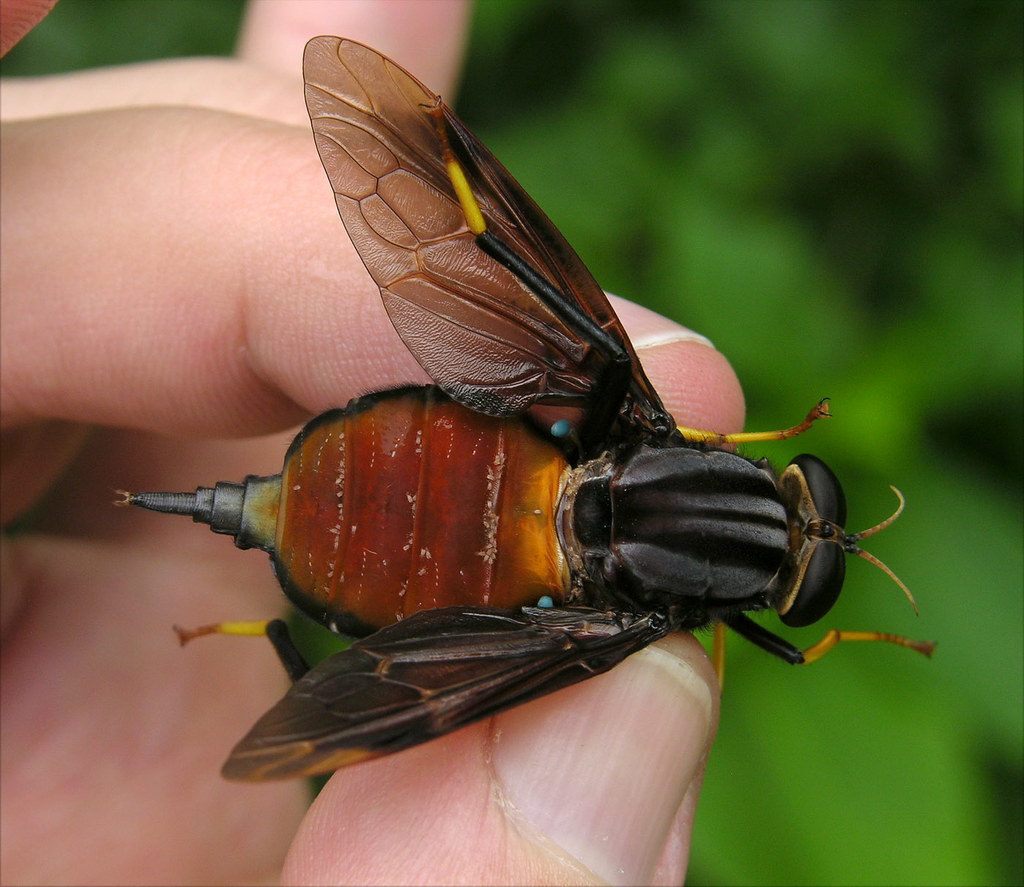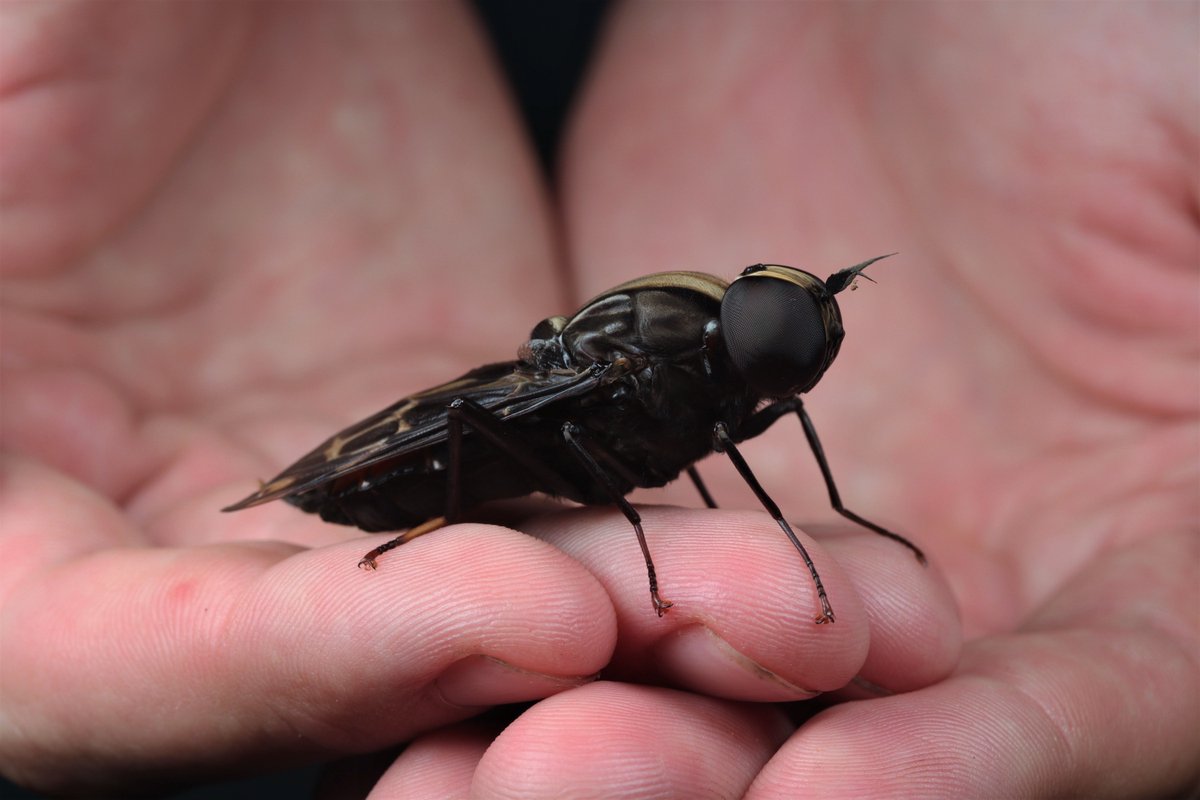Goliathus
Pachnoda
A large Mydas Fly (Mydas clavatus) that I found today. I see these flies every summer, usually around wood piles. The larvae live in rotting wood or rich organic soil, where they are predatory on scarab beetle larvae. The adults (which mimic spider wasps such as Anoplius spp.) have an iridescent blue-black sheen to the wings, and flash bright orange abdominal markings when startled. This specimen is rather large for a US species, but some South American forms, such as Gauromydas heros, are even larger, and are among the biggest flies in the world.











